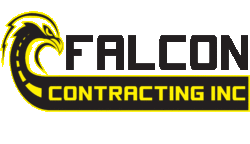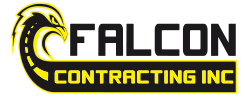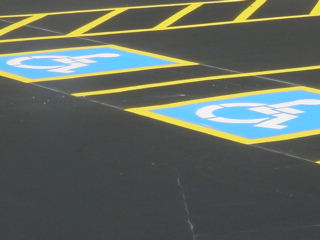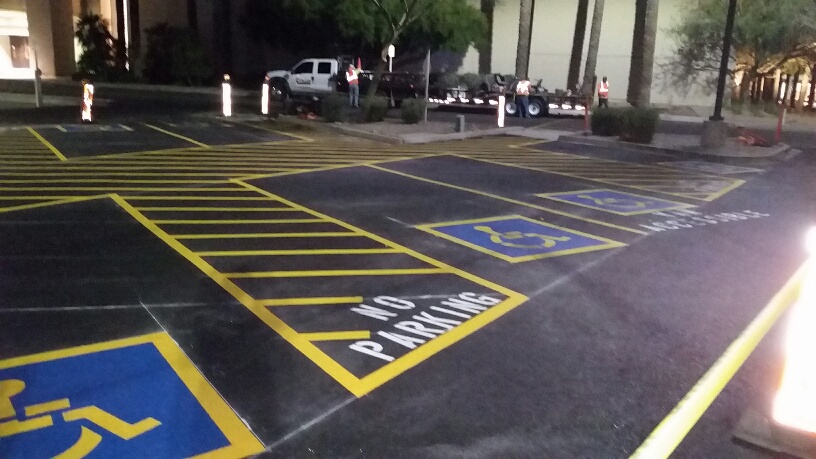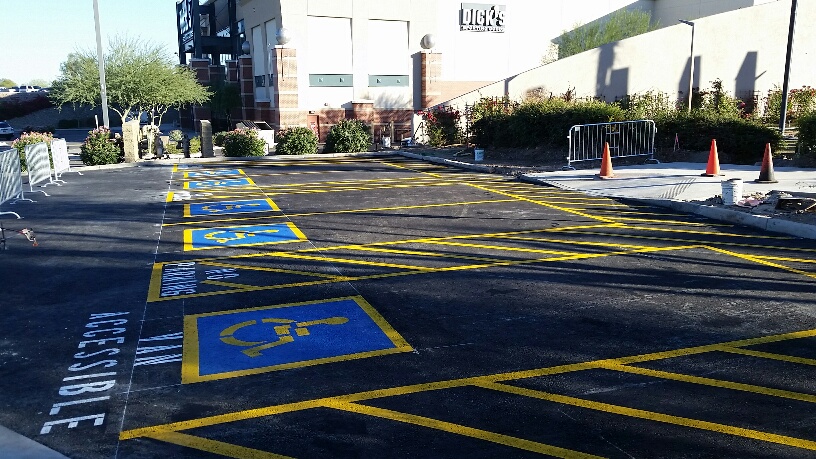Parking lot striping consists of 4 inch lines for stall designations, handicap symbols, directional arrows, legends such as "yield" or "stop", red curb and line (6 inch) fire route designation, and hatched out areas to exclude parking for loading or provide ADA access routes. Typically, after a starting point is determined, chalk lines are placed to specify where each stall will be painted, and the beginning and ending of that stall line.
Compared to runway striping and complex roadway configurations, parking lot striping would seem to be fairly simple and straight forward. Let me assure you it is not. Most facilities when planning their parking must provide an adequate number of stalls for the allowed occupancy of the building. If the correct number of stalls are not in place, the number of patrons can be limited. Another challenge comes in the form of the vast "sea" of asphalt such is found at a WalMart Super Center. Just exactly where is the starting point and how is spacing to be calculated to get the correct number of stalls, aisles, and specialty parking spots? How should the painted islands be formed and what are the radius points? The effort to get it right can be daunting.
Falcon Contracting employs a very experienced crew of field supervisor, foreman, stripers and laborers that make this whole process quick and efficient. We also use some very basic quality standards not employed by any other Markings Contractor in Arizona. ALL striping receives two wet 15 mil coats of paint resulting in a final dry finish of at least 15 mil thickness lines. Additionally, all beginning and ending stall lines are either masked with tape or roofing shingles before being painted. This produces a very square accurate and sharp line. Finally Falcon Contracting employs a fleet of power driven striping equipment that not only lessens the fatigue of the painter but also decreases the likelihood of unnecessary mistakes. As a bonus, the automated process can result in a completion rate of 15,000 to 20,000 linear feet in a day thereby producing less impact and disruption to the customer's operation.
